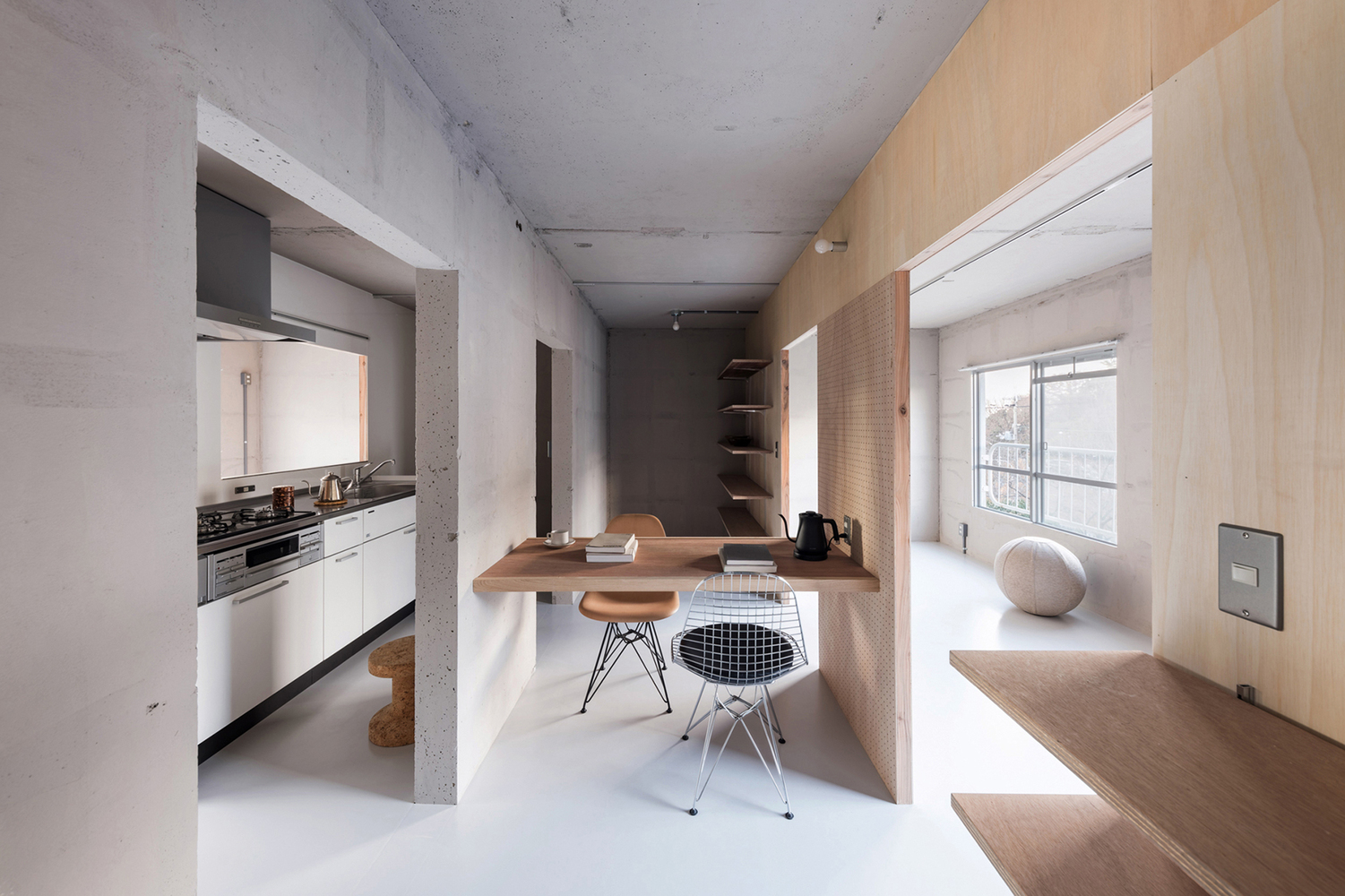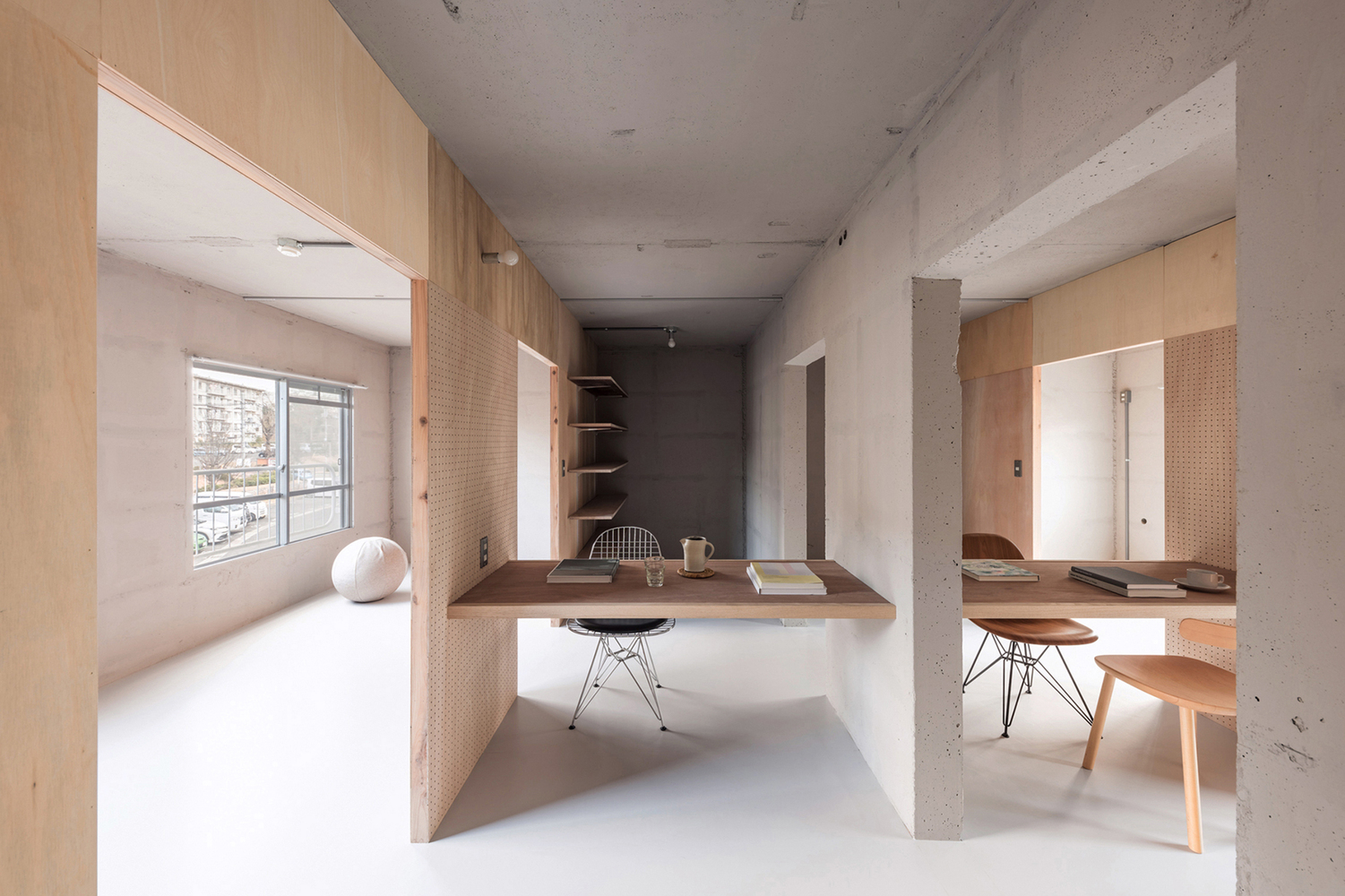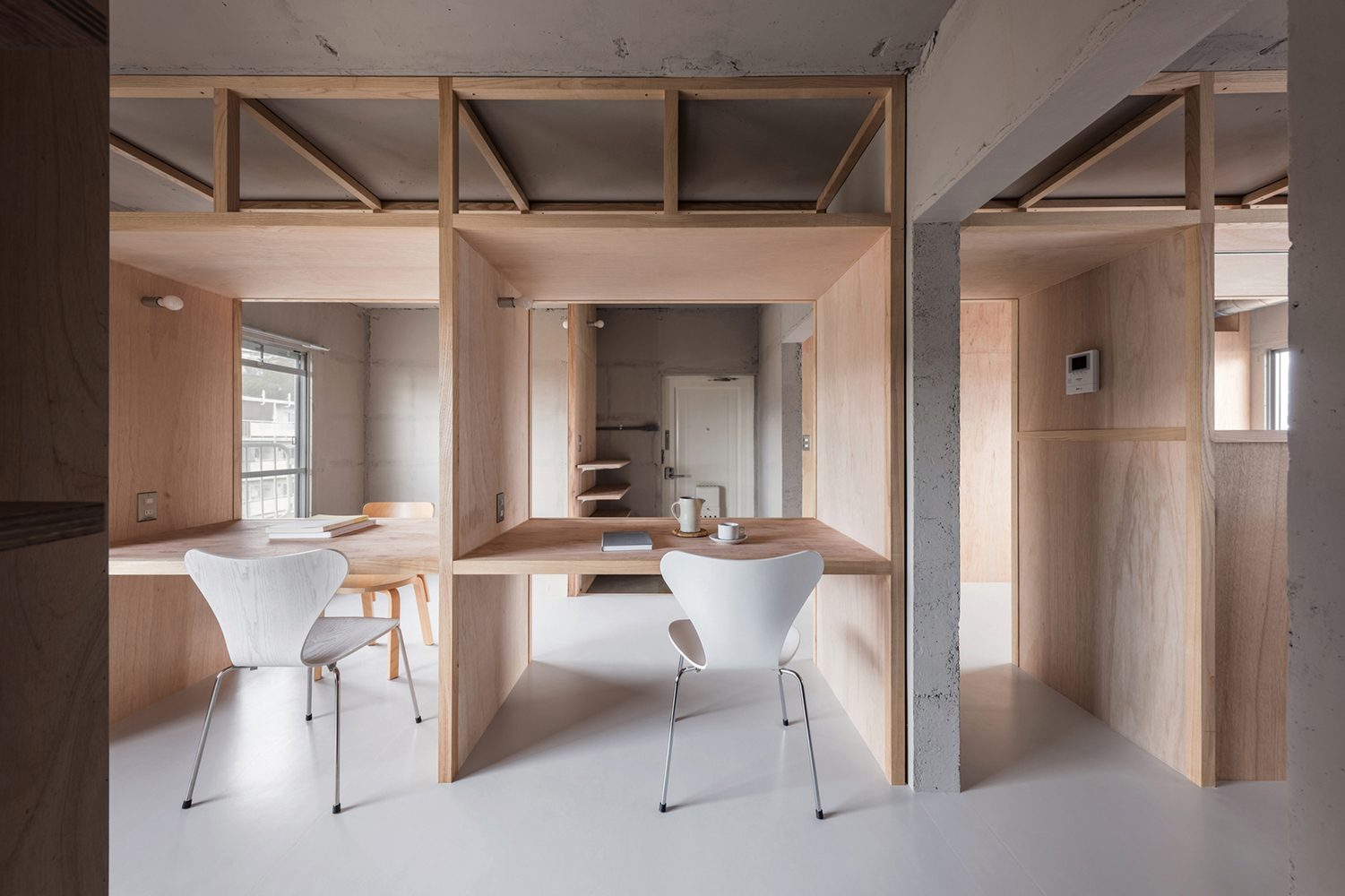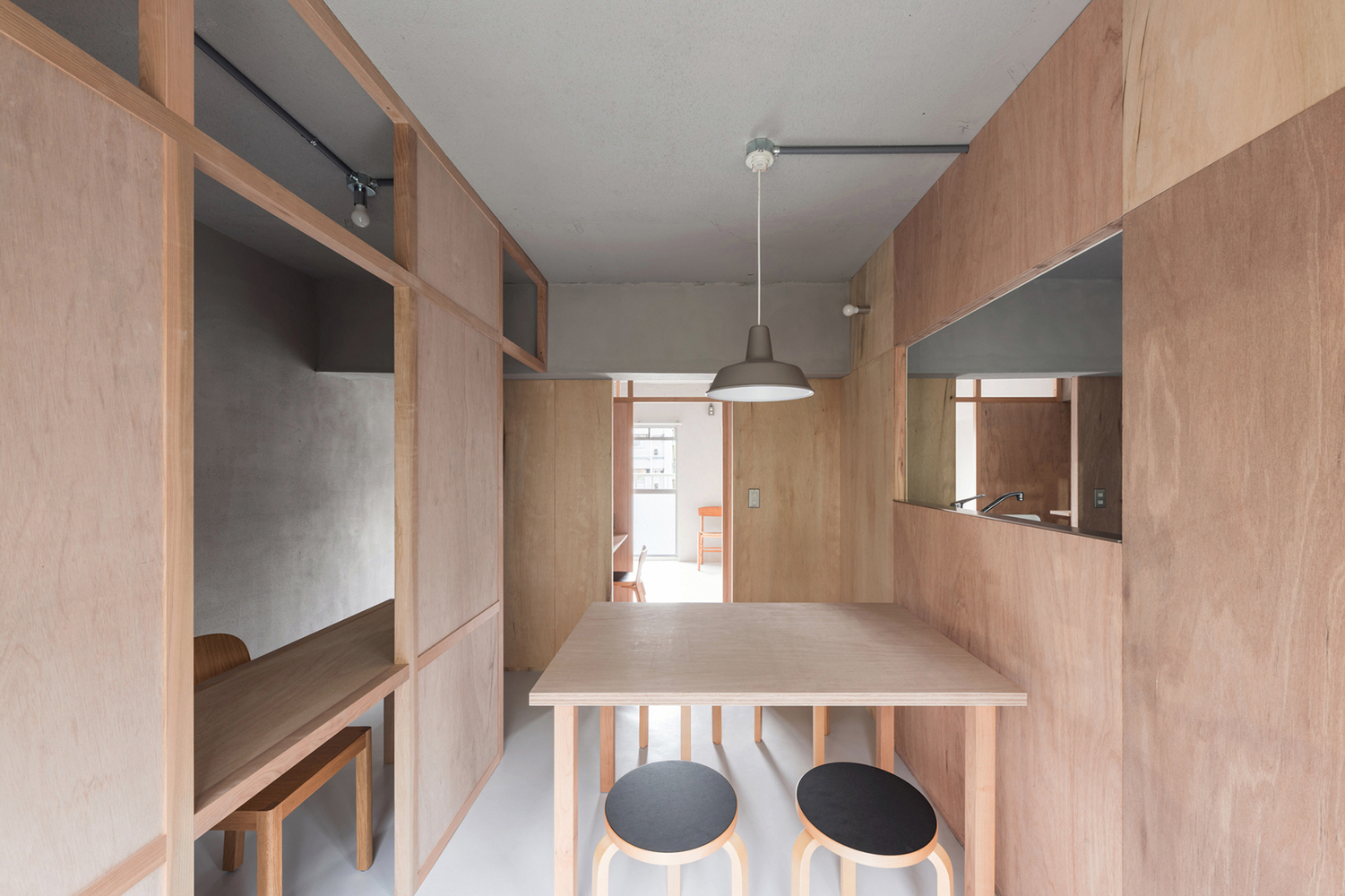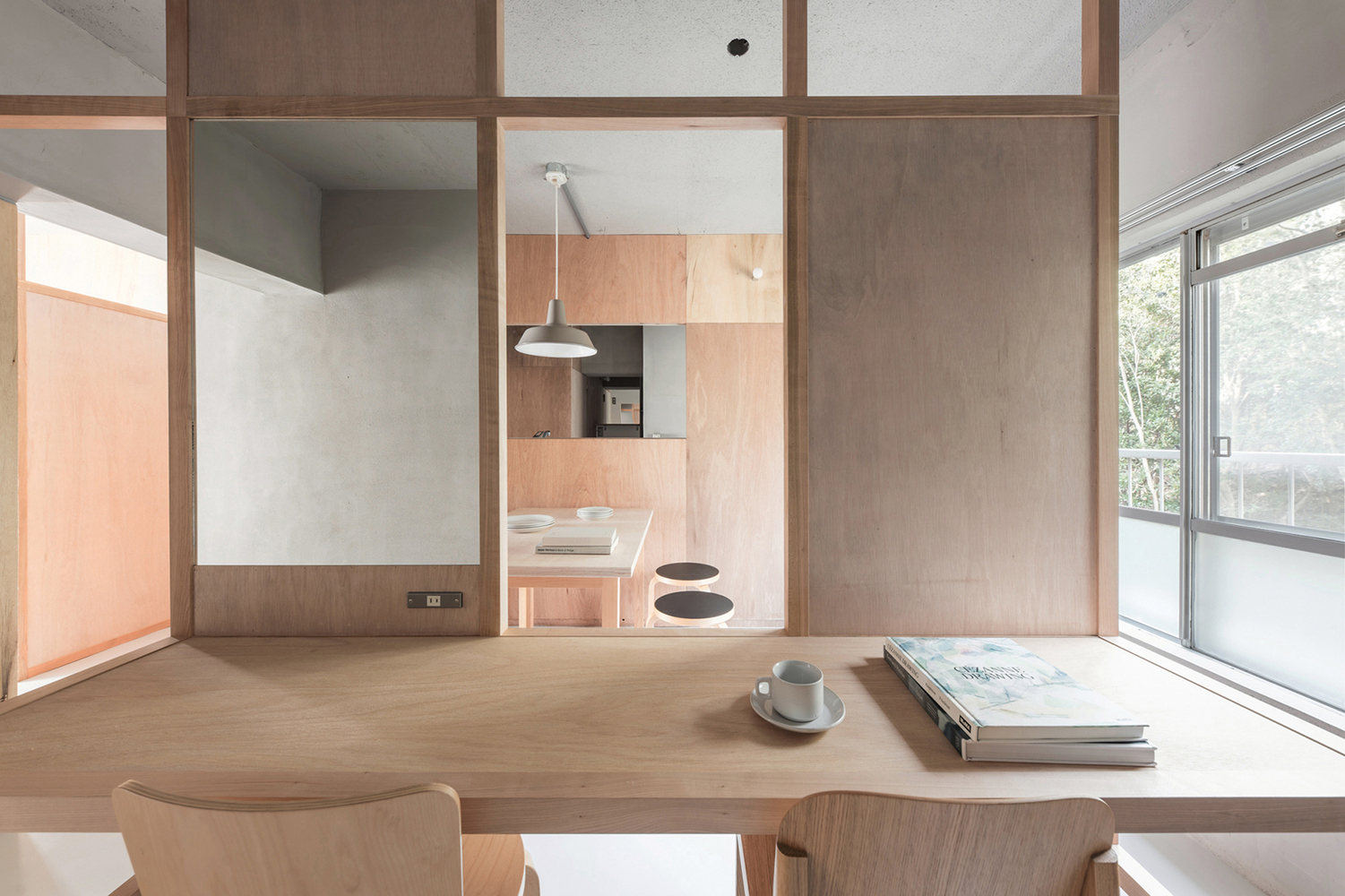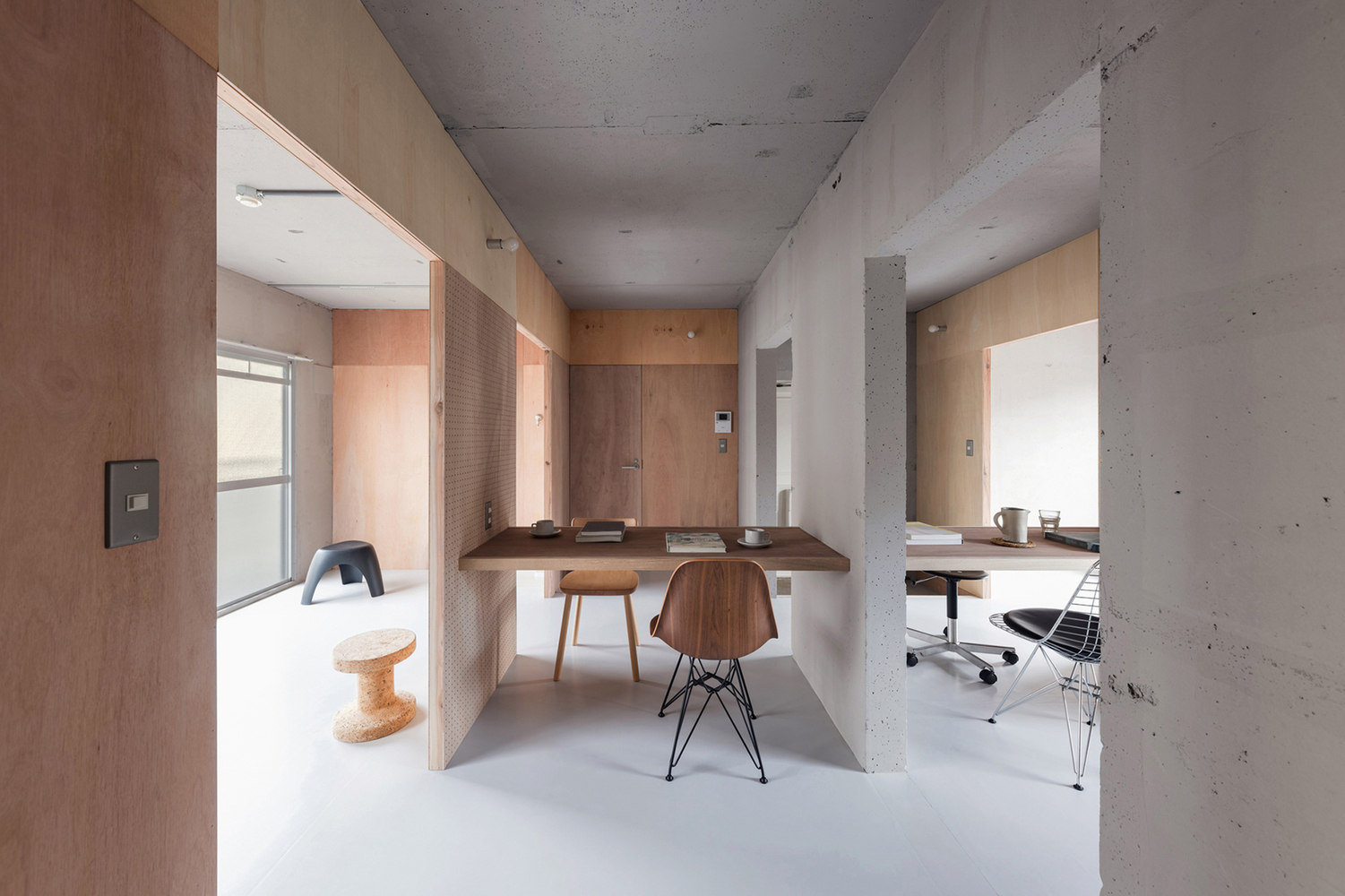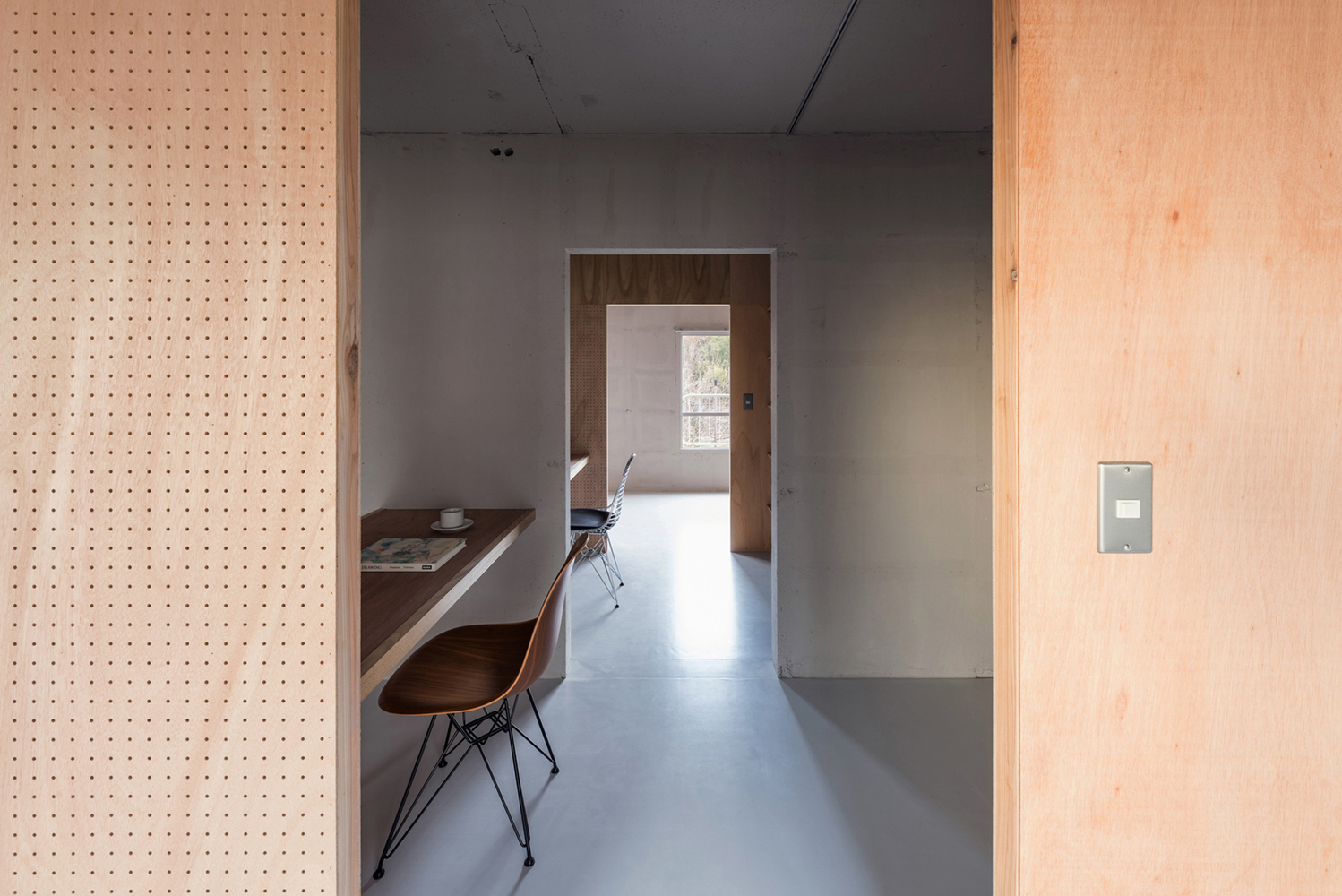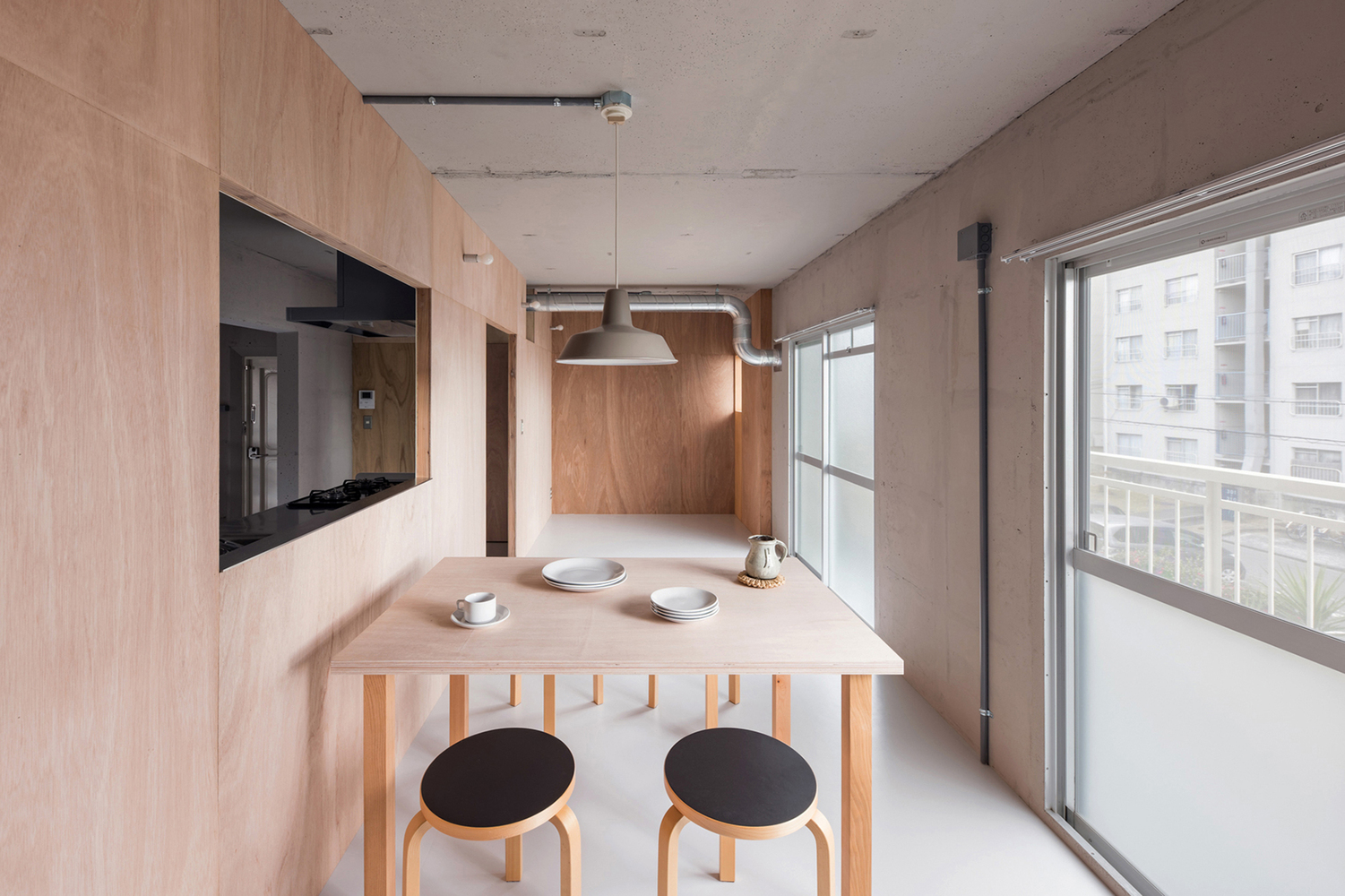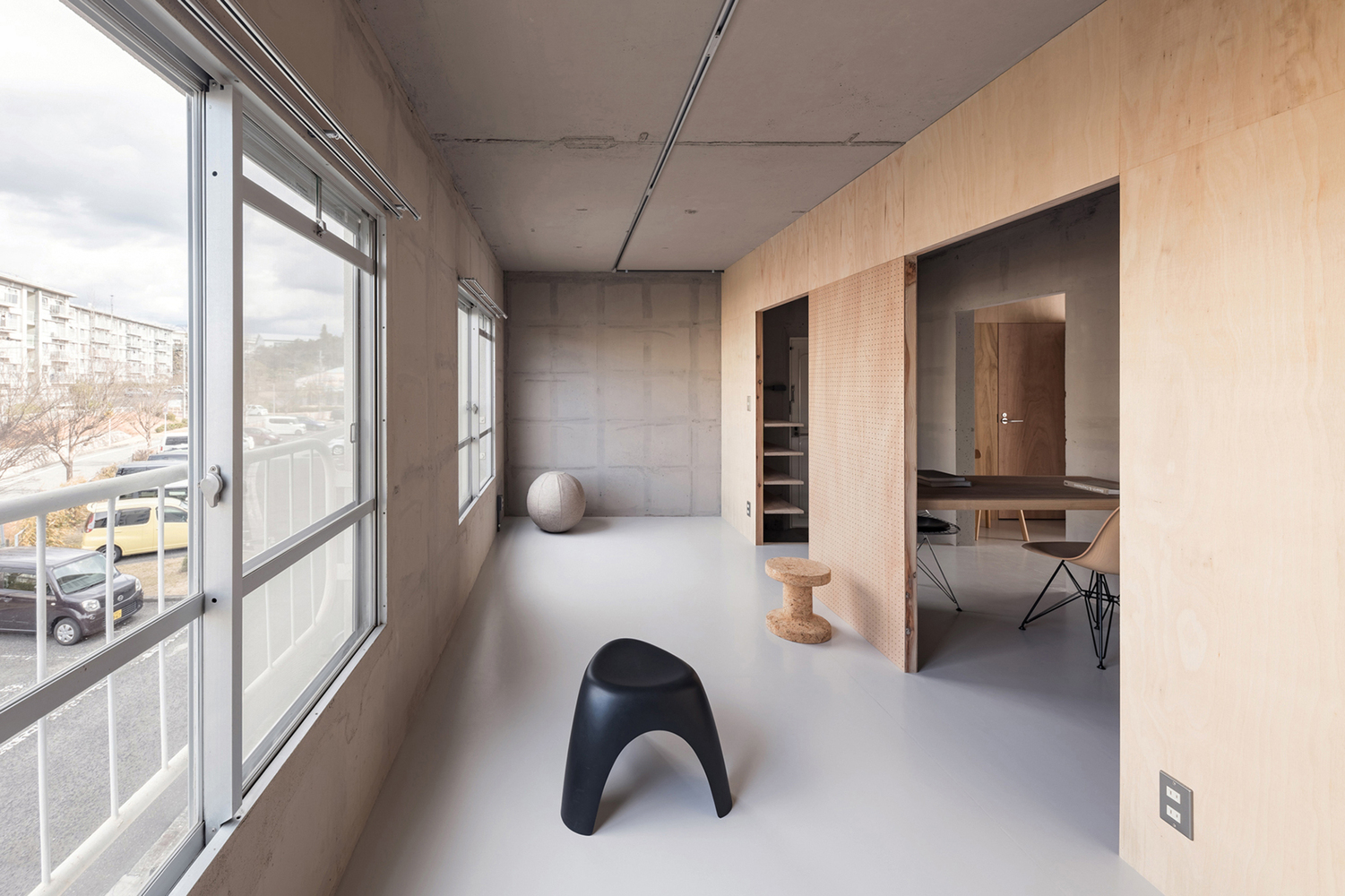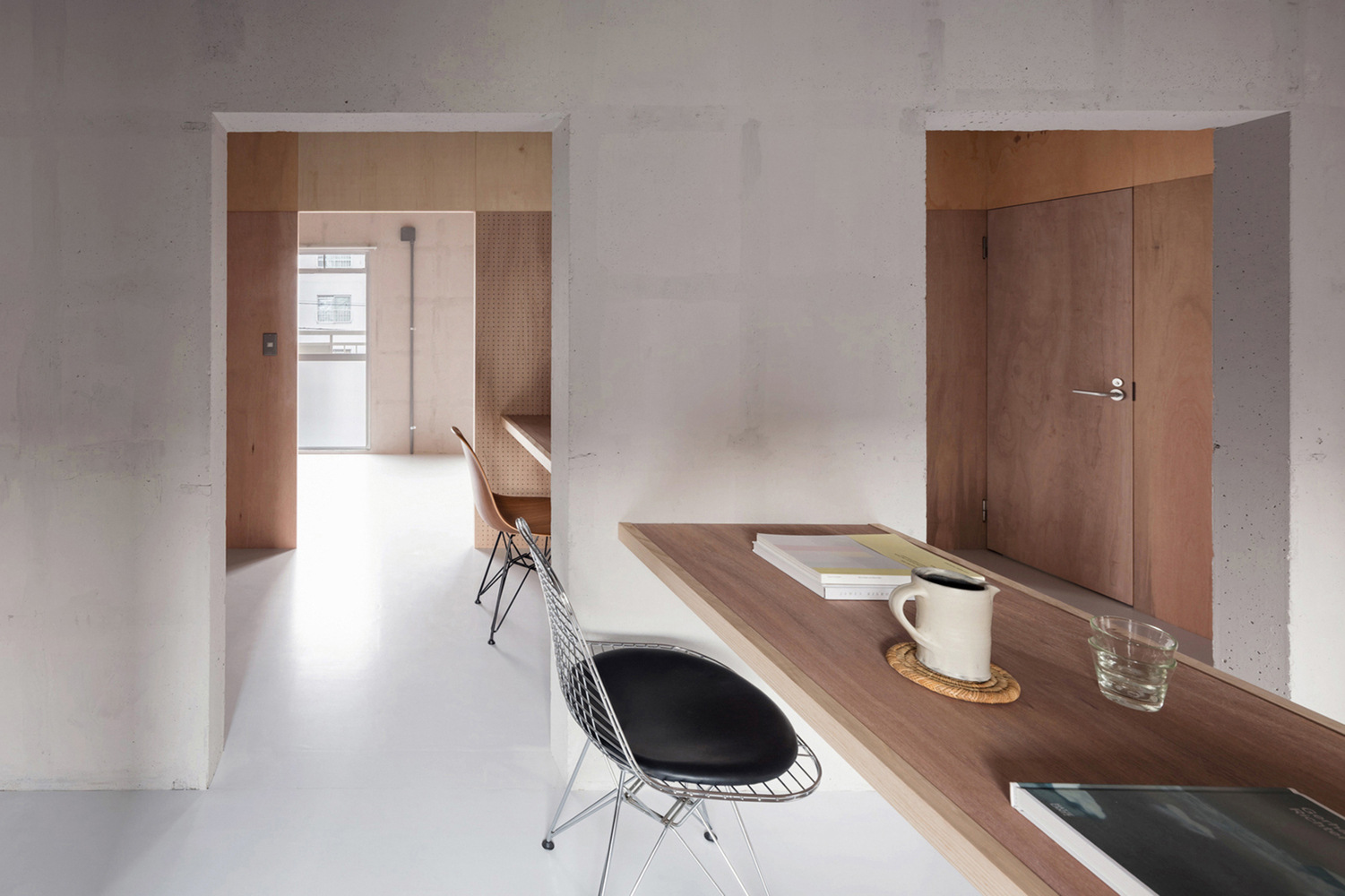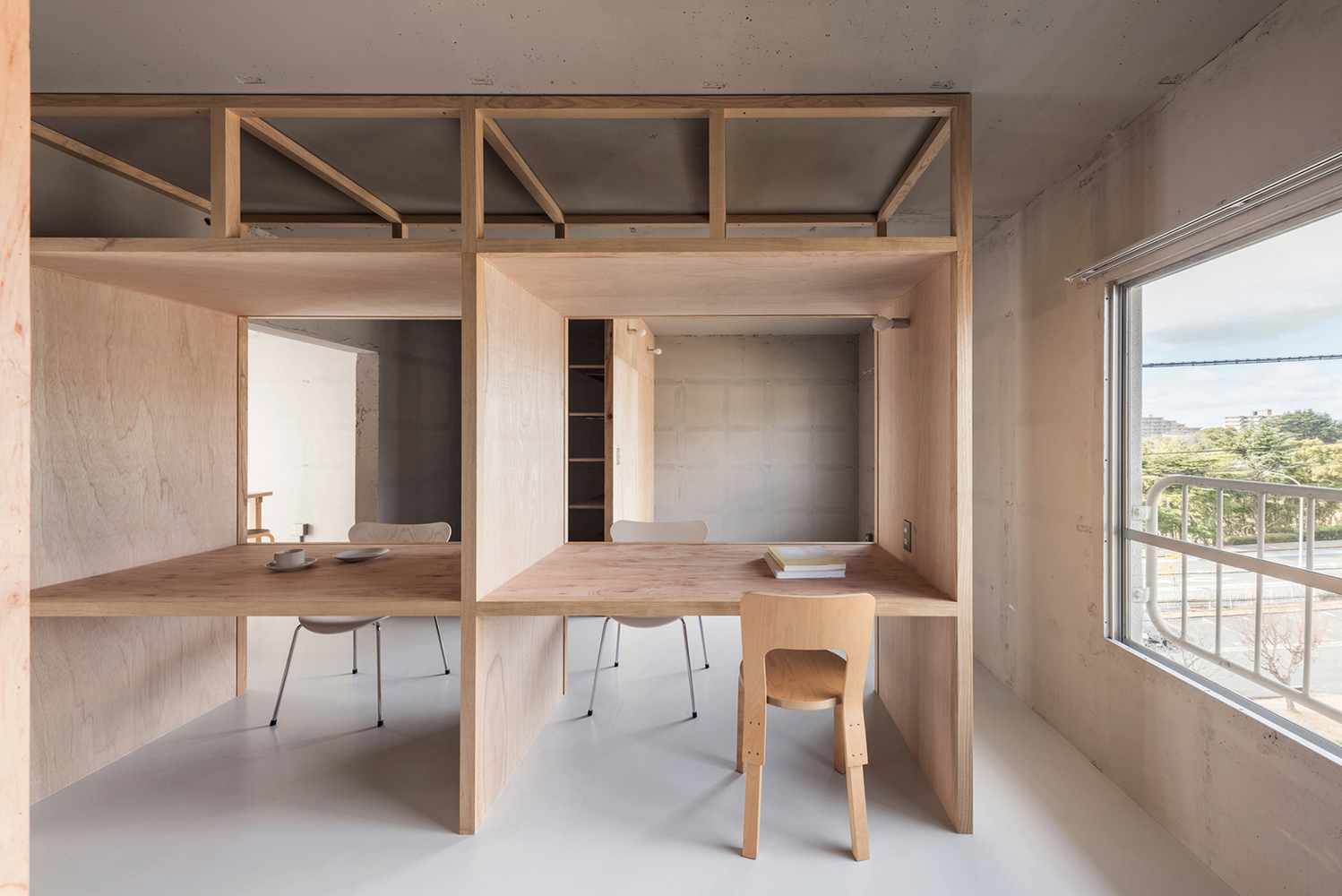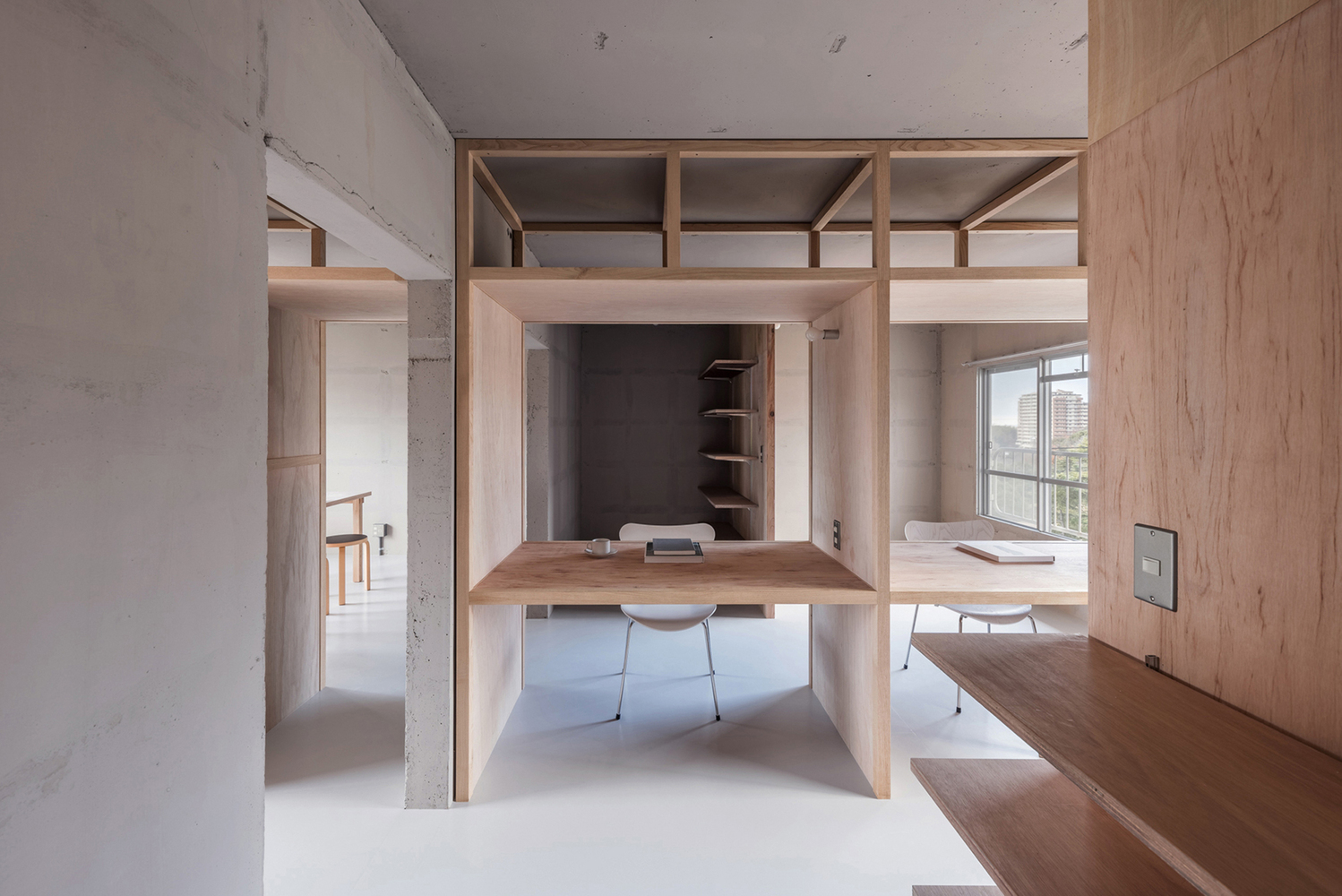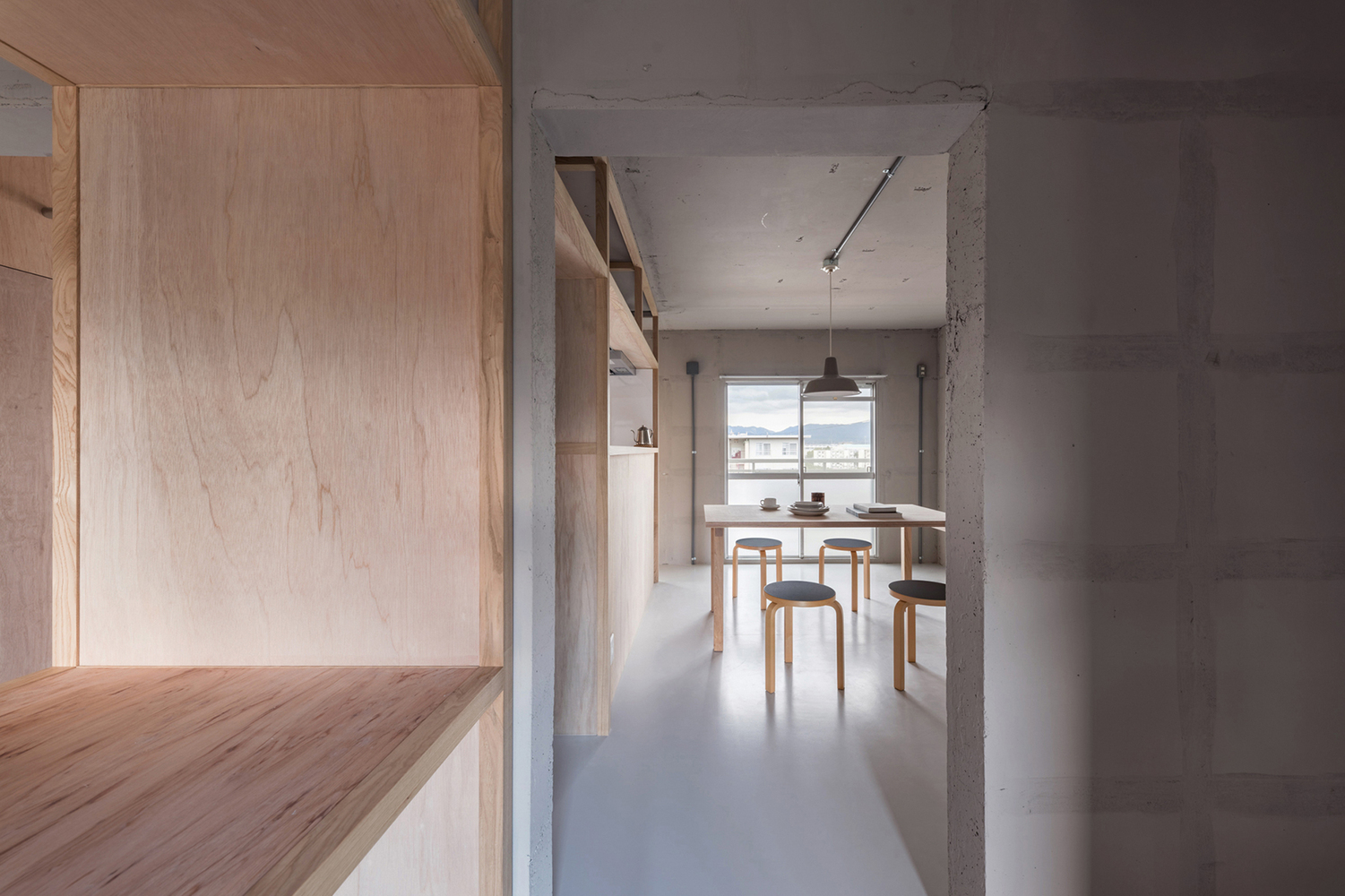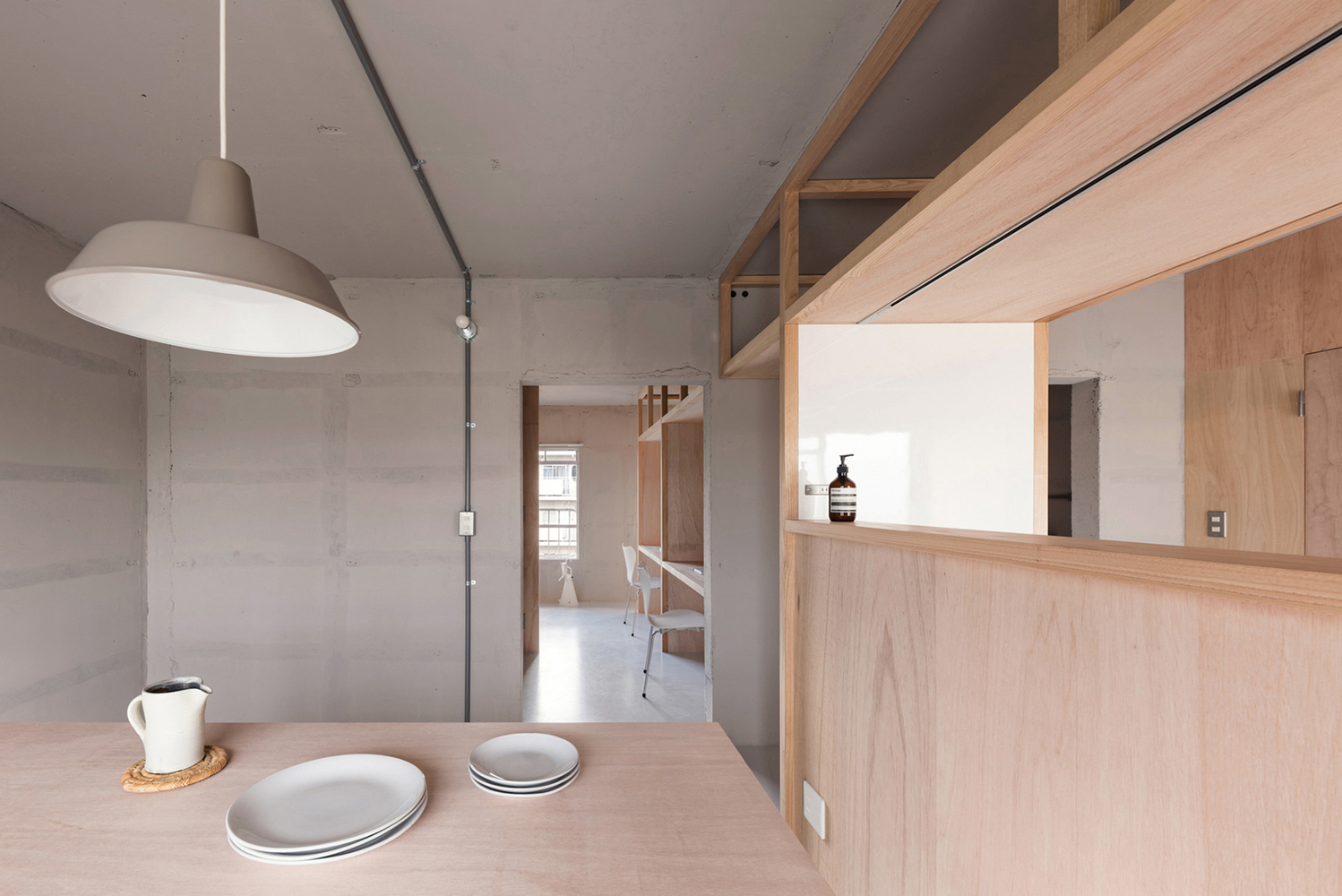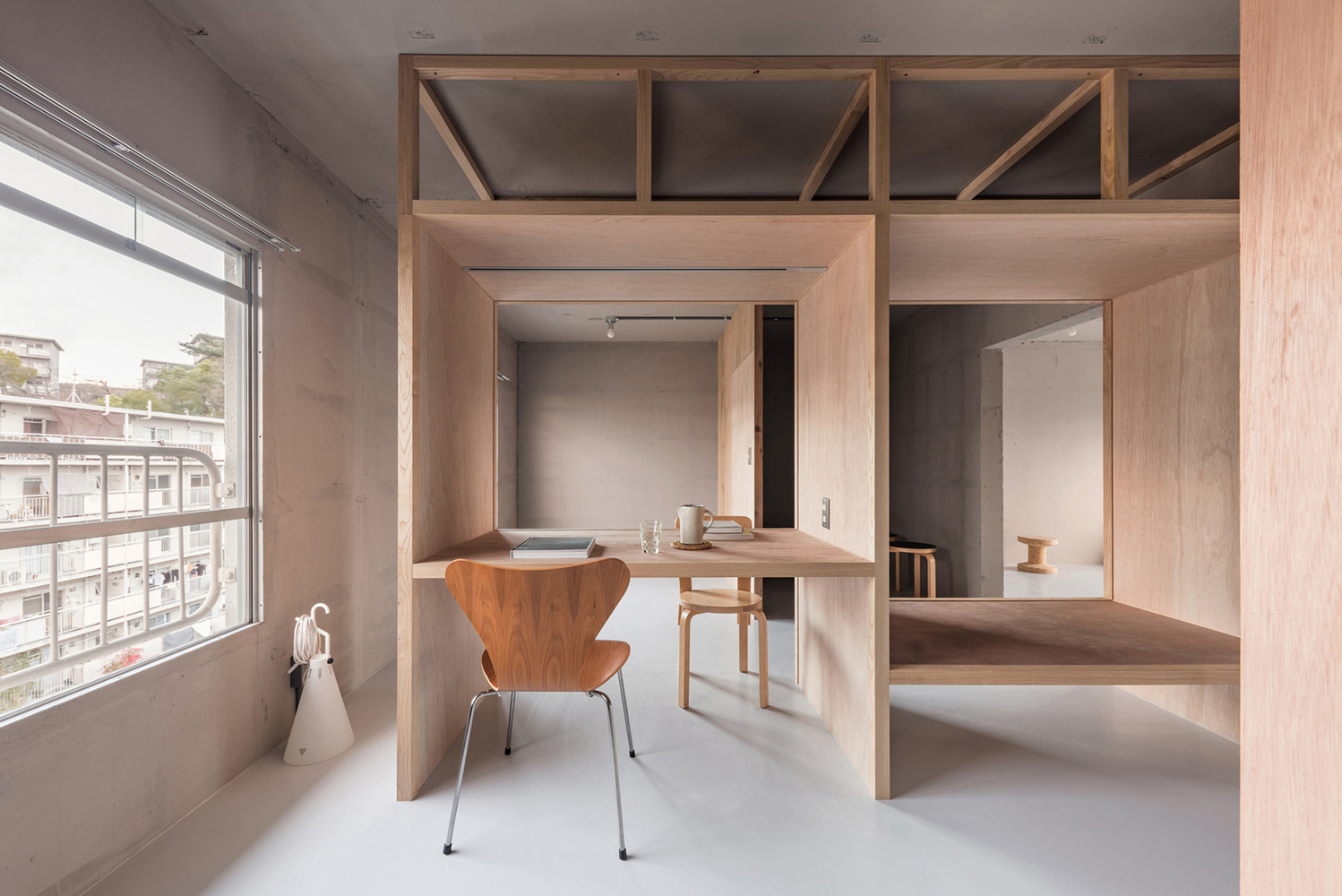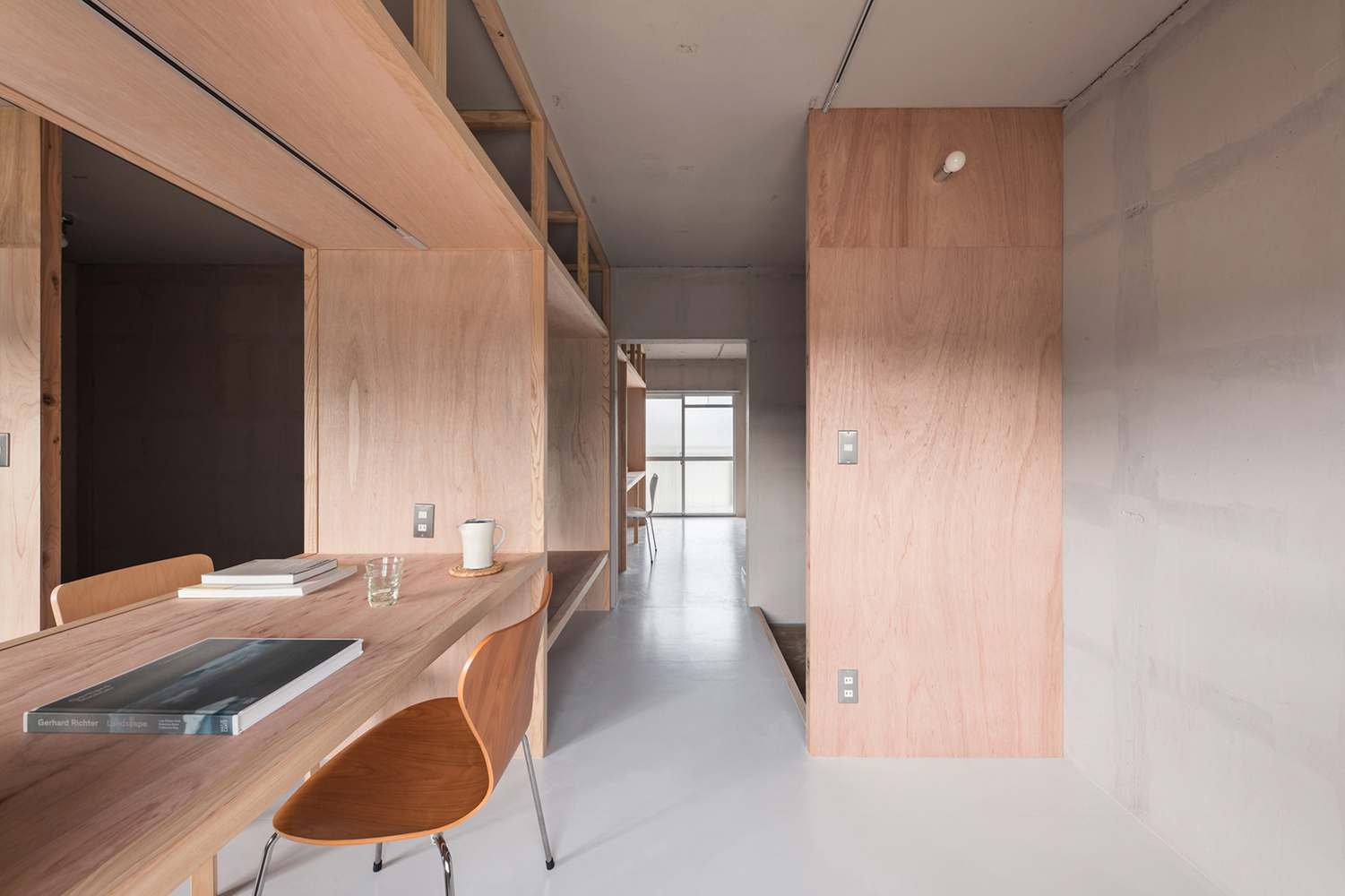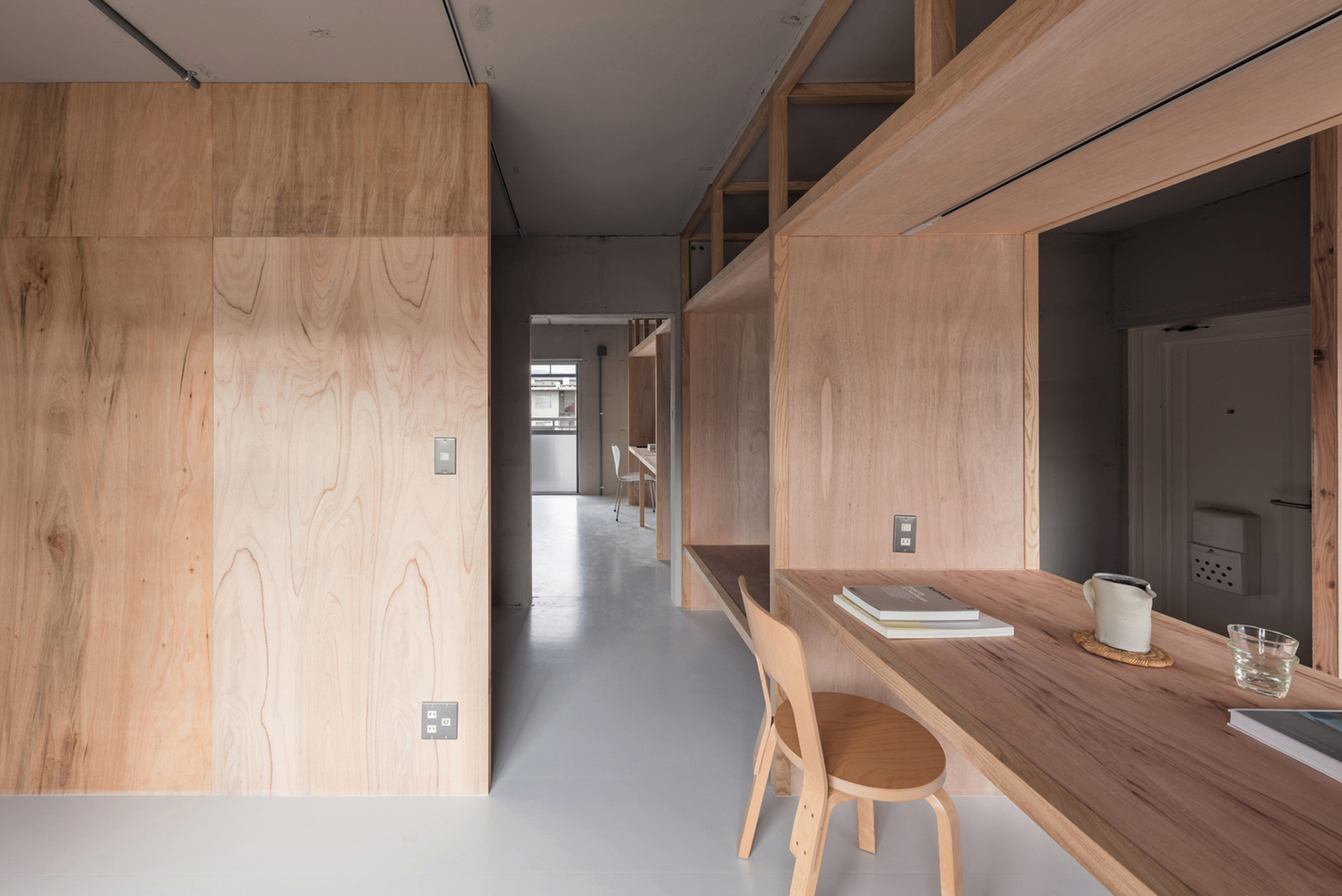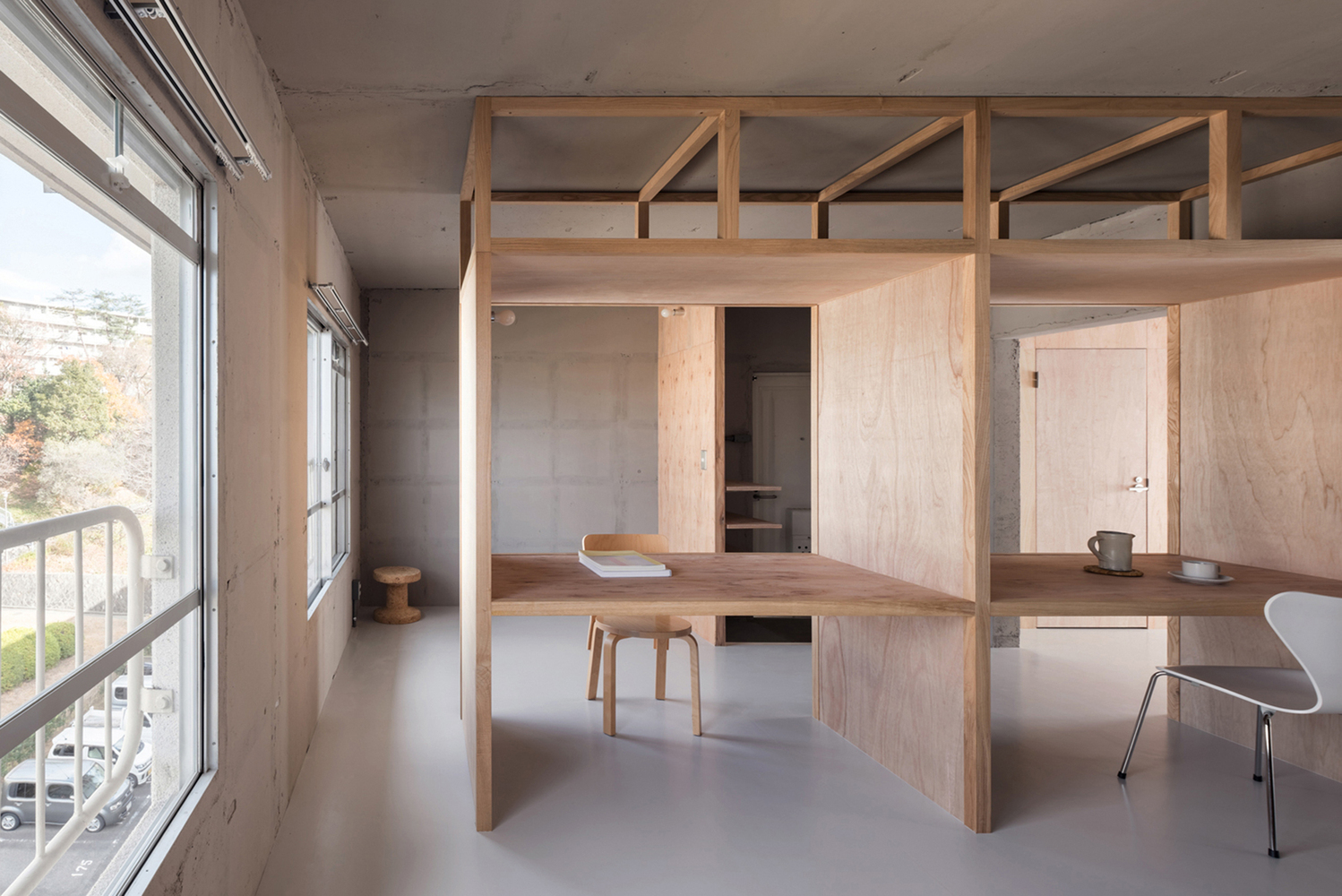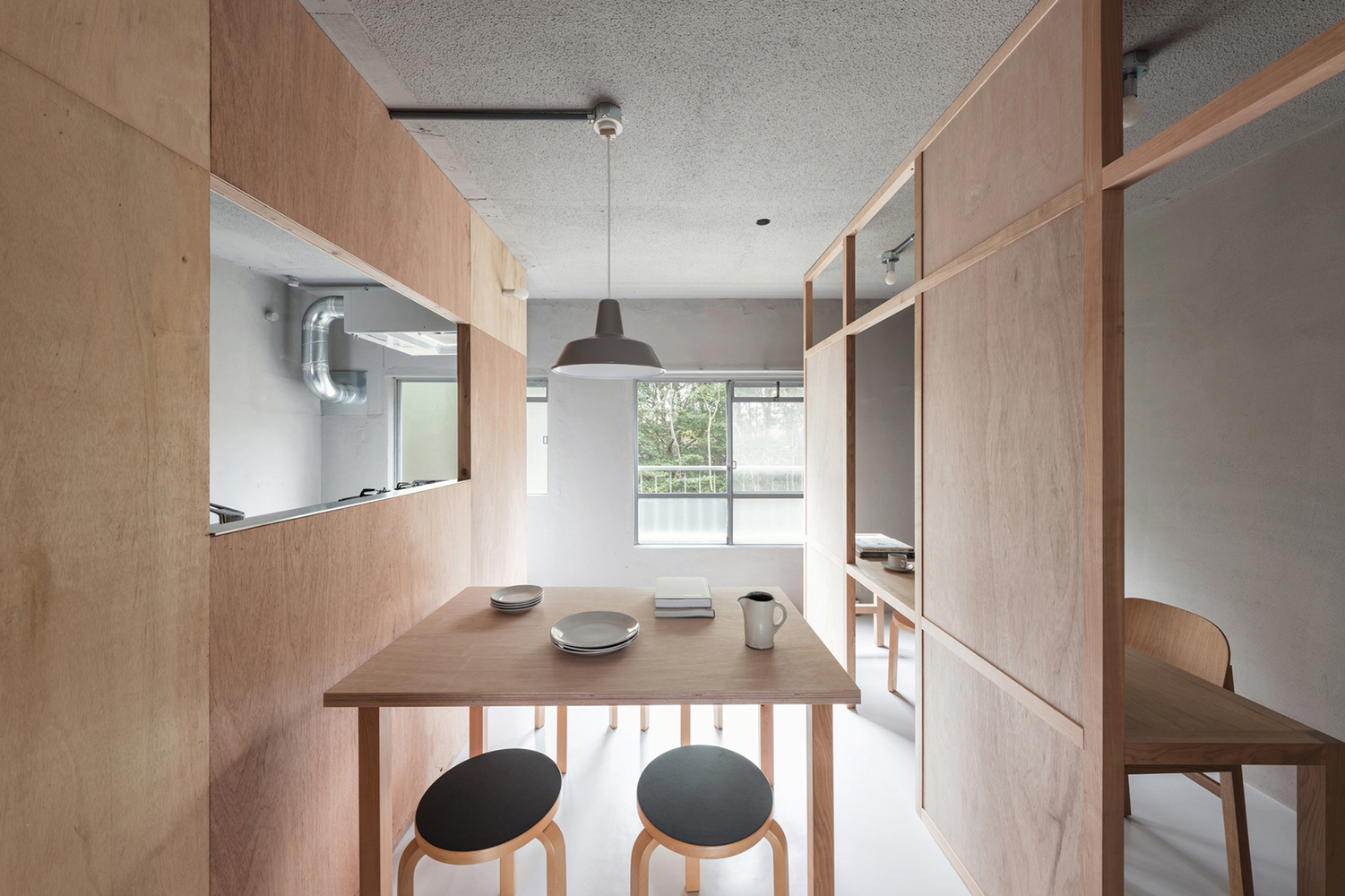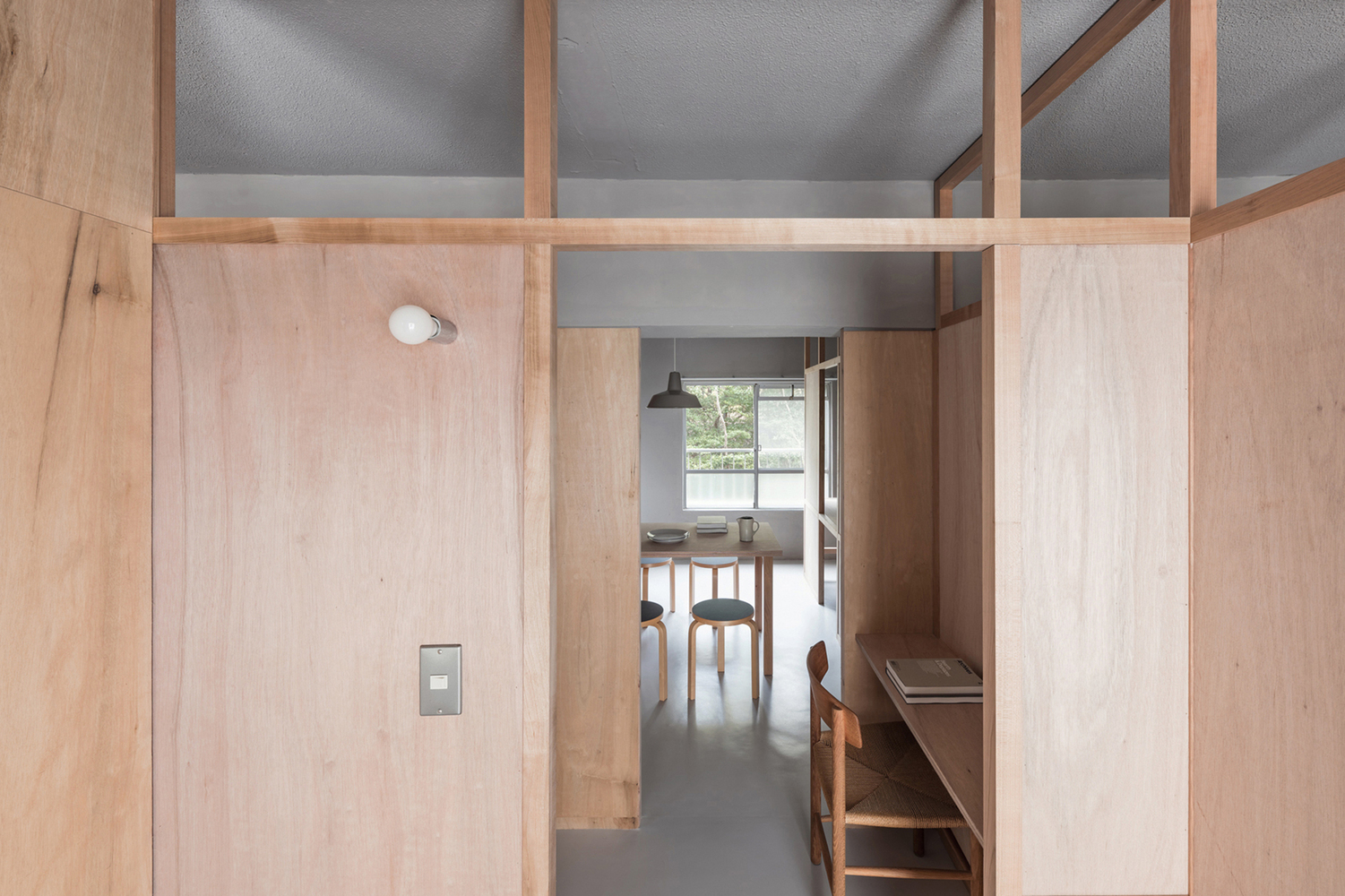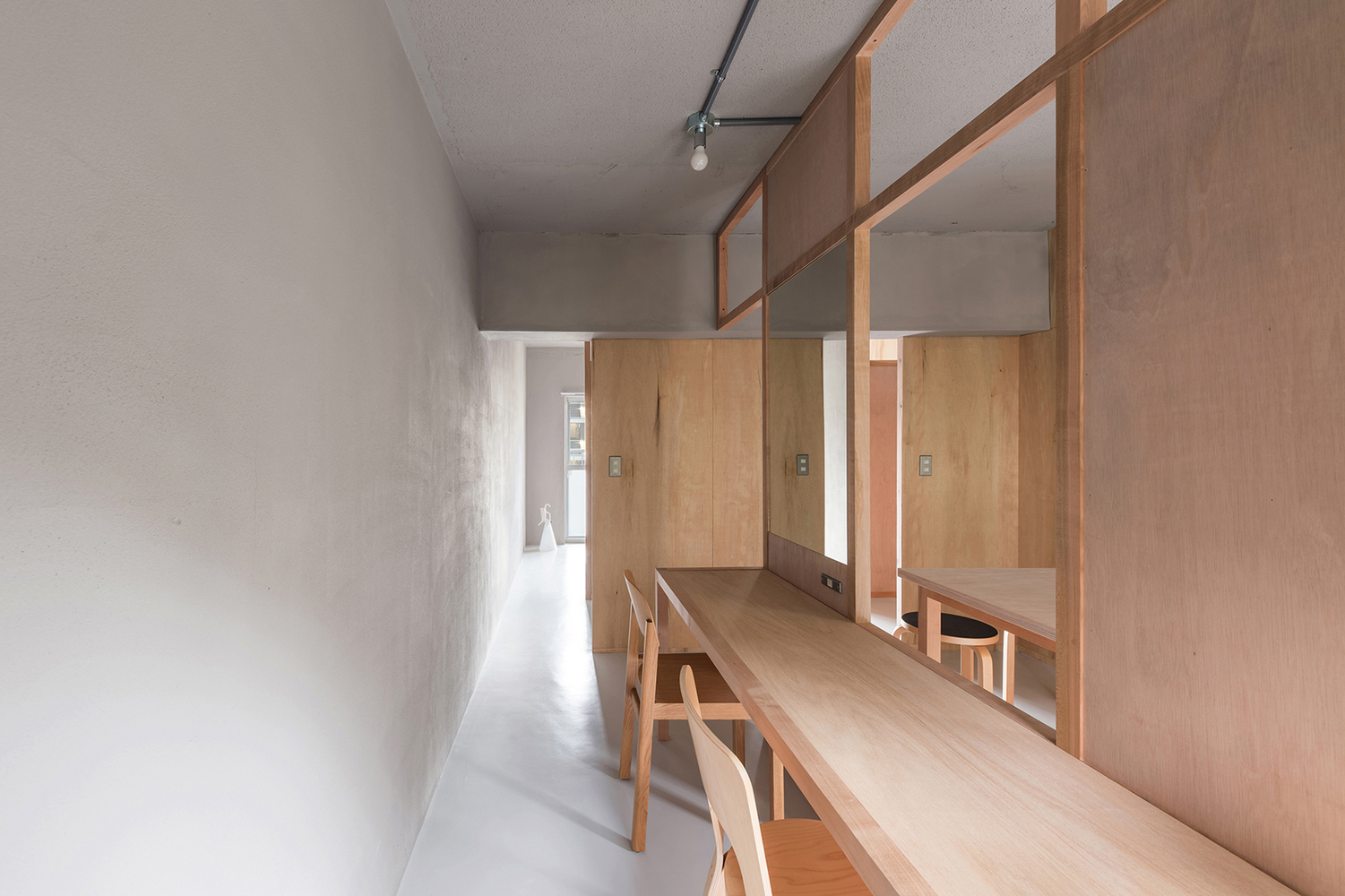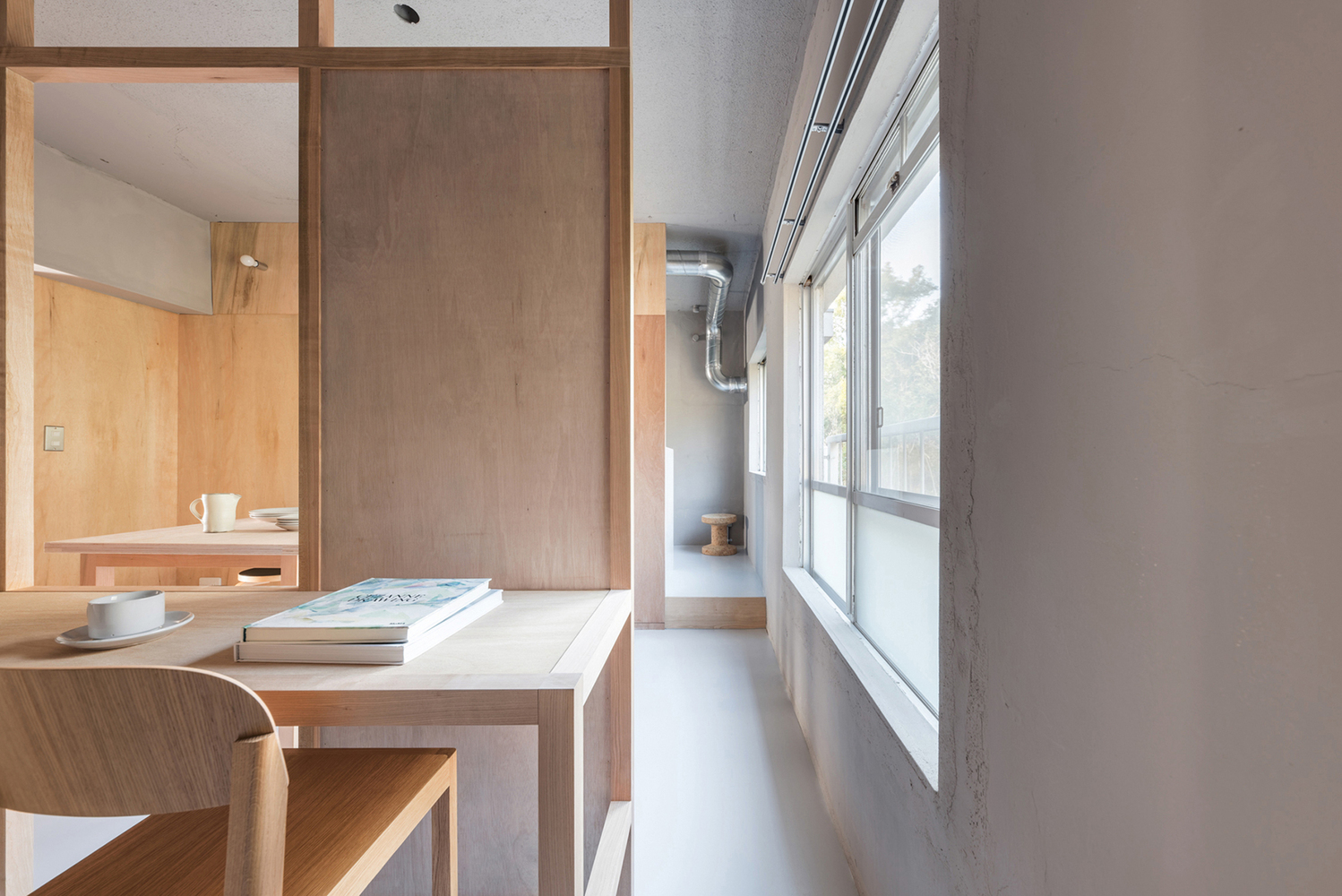Chayamadai Danchi Housing Complex is a minimal architecture project located in Osaka, Japan, designed by Studio Rakkora Architects. Chayamadai Danchi is a typical example of a Japanese housing complex from the 1960s. Ample spacing between the neighboring buildings, as well as the stairwell of the housing units, allows for natural light to enter from both sides of the building, ensuring that every unit is well lit. It was assumed that the concrete frame of the central structural wall and beams would remain. Through the process of renovation, the architects thought that it would be meaningful to utilize the existing structure without opposing its inherent spatiality. This project proposes a new way of living by considering the reinterpretation of the existing structure, and its relationship to the illuminated spaces that are unique to the housing complex. In plans A and B, the existing structural wall with its two openings is left in the center, and the position of the newly inserted wall and the frame is determined in accordance with the opening of the old frame. By reinterpreting the existing, the studio was able to realize a characteristic spatial composition that allows natural light and air to pass through.
In plan C, the large beam was left in the center, and multiple walls and frames with openings were inserted at the periphery to create a soft space where light can circulate. The greenery of the apartment complex and the buildings across the street can be seen through these new elements. By consciously manipulating the materiality and scale of the inserted elements amid the presence of the existing concrete frame, the architects hoped to create a positive spatial experience of the surrounding environment. Two new walls were inserted parallel to the existing walls, creating four separate lanes. Spatial depth is achieved through the visual linear flow and resulting perspective on the North-South axis. They assumed that the relationship between family members would change as the children mature, and the studio wanted to create a sense of layeredness that allows for some privacy by having multiple thresholds in a loose succession.
Photography by Tetsuya Hayashiguchi
